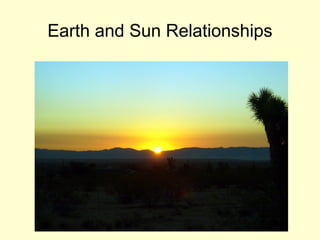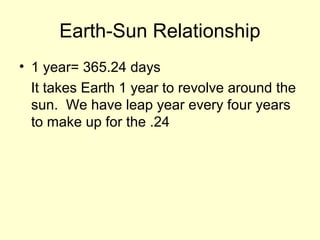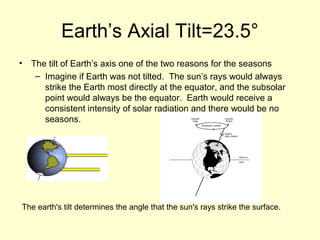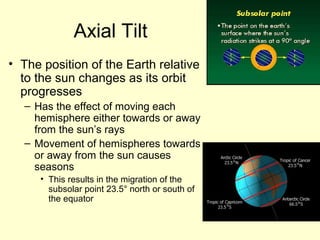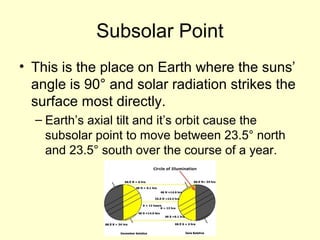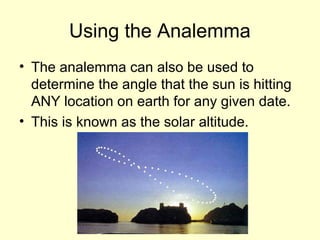The document discusses Earth's relationship with the Sun. It explains that Earth revolves around the Sun in an elliptical orbit over the course of 1 year, and rotates on its axis over the course of 1 day. Due to Earth's axial tilt of 23.5 degrees and its revolution around the Sun, the Sun's rays strike different parts of Earth at different angles over the course of the year, causing the seasons. An analemma diagram can be used to determine the position of the subsolar point and solar altitude for any location on Earth on a given date.
